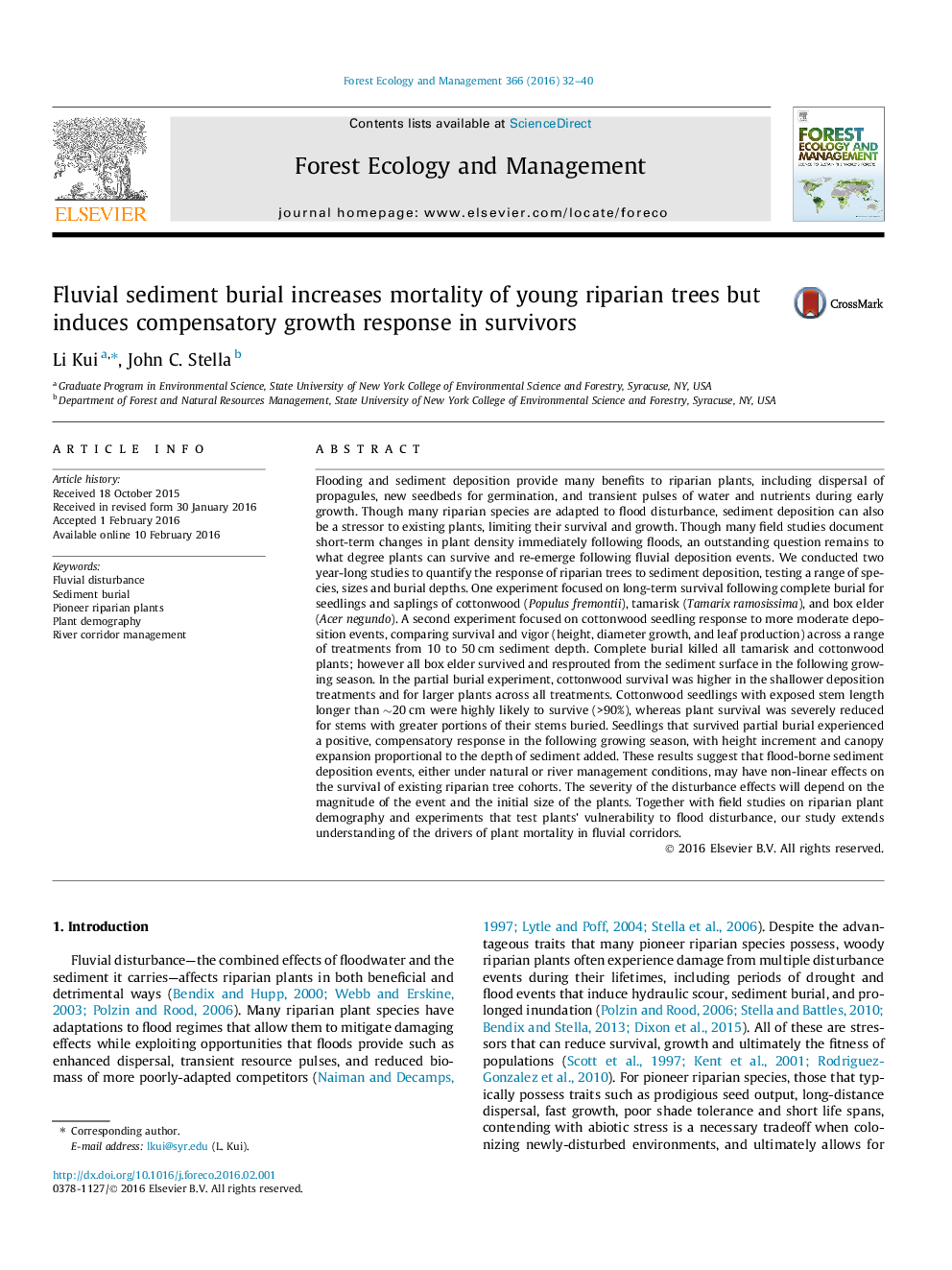| کد مقاله | کد نشریه | سال انتشار | مقاله انگلیسی | نسخه تمام متن |
|---|---|---|---|---|
| 86035 | 159159 | 2016 | 9 صفحه PDF | دانلود رایگان |
• Sediment burial is an important mortality agent in riparian vegetation communities.
• Complete burial kills cottonwood and tamarisk, but not box elder seedlings.
• Cottonwoods survived partial burial when >20 cm of their stems remain exposed.
• Partial burial induces compensatory height and canopy growth in surviving plants.
Flooding and sediment deposition provide many benefits to riparian plants, including dispersal of propagules, new seedbeds for germination, and transient pulses of water and nutrients during early growth. Though many riparian species are adapted to flood disturbance, sediment deposition can also be a stressor to existing plants, limiting their survival and growth. Though many field studies document short-term changes in plant density immediately following floods, an outstanding question remains to what degree plants can survive and re-emerge following fluvial deposition events. We conducted two year-long studies to quantify the response of riparian trees to sediment deposition, testing a range of species, sizes and burial depths. One experiment focused on long-term survival following complete burial for seedlings and saplings of cottonwood (Populus fremontii), tamarisk (Tamarix ramosissima), and box elder (Acer negundo). A second experiment focused on cottonwood seedling response to more moderate deposition events, comparing survival and vigor (height, diameter growth, and leaf production) across a range of treatments from 10 to 50 cm sediment depth. Complete burial killed all tamarisk and cottonwood plants; however all box elder survived and resprouted from the sediment surface in the following growing season. In the partial burial experiment, cottonwood survival was higher in the shallower deposition treatments and for larger plants across all treatments. Cottonwood seedlings with exposed stem length longer than ∼20 cm were highly likely to survive (>90%), whereas plant survival was severely reduced for stems with greater portions of their stems buried. Seedlings that survived partial burial experienced a positive, compensatory response in the following growing season, with height increment and canopy expansion proportional to the depth of sediment added. These results suggest that flood-borne sediment deposition events, either under natural or river management conditions, may have non-linear effects on the survival of existing riparian tree cohorts. The severity of the disturbance effects will depend on the magnitude of the event and the initial size of the plants. Together with field studies on riparian plant demography and experiments that test plants’ vulnerability to flood disturbance, our study extends understanding of the drivers of plant mortality in fluvial corridors.
Journal: Forest Ecology and Management - Volume 366, 15 April 2016, Pages 32–40
